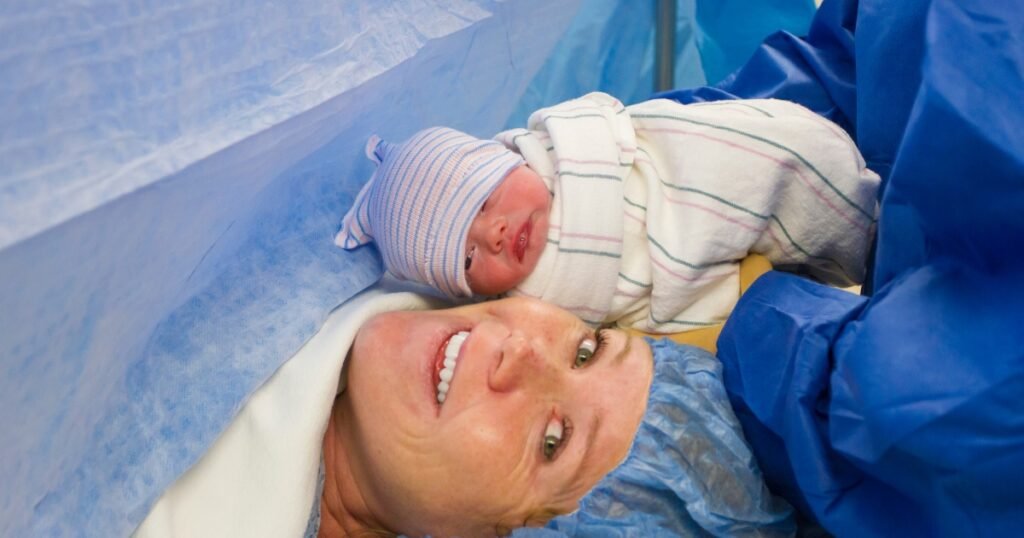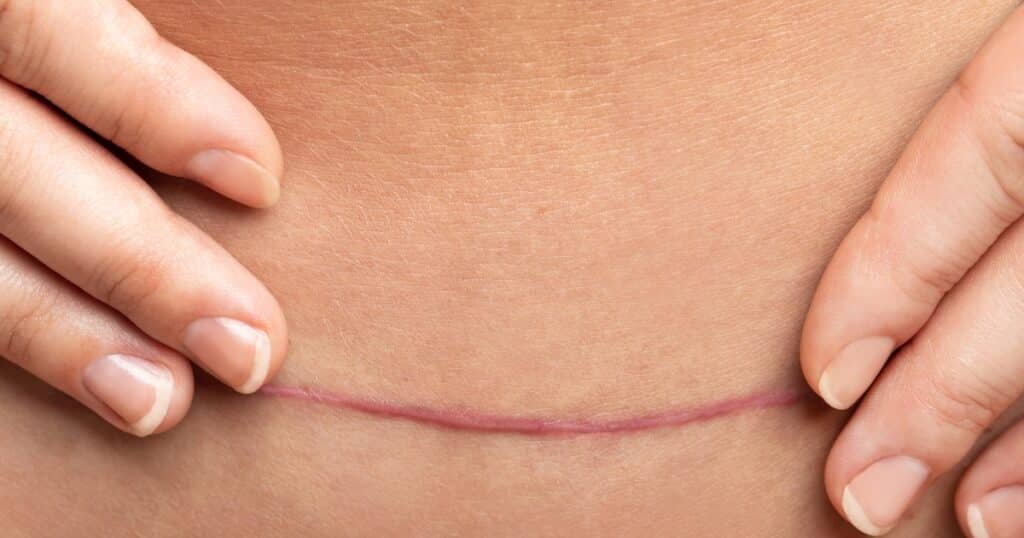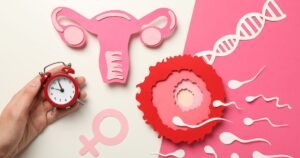Last Updated on 8 July 2024
As an obstetrician, I’ve had the privilege of supporting countless women through the beautiful yet challenging journey of childbirth. One of the most common procedures I encounter is the cesarean section, or C-section. While it is a routine surgery, the recovery process can be quite different from that of a vaginal birth. I often find that new mothers, especially those who have undergone a C-section, need tailored guidance and support to navigate the postpartum period effectively. This is where a comprehensive nursing care plan for postpartum C-section recovery becomes invaluable.
Creating a nursing care plan for postpartum C-section recovery involves more than just clinical care; it is about addressing the whole person. A C-section is a major surgery, and the recovery can be physically demanding. The plan must encompass pain management, wound care, and physical activity guidelines to promote healing and prevent complications.
The emotional and psychological aspects of recovery are equally important. Many new mothers experience a mix of emotions, ranging from joy and relief to anxiety and sadness. The hormonal changes, coupled with the demands of caring for a newborn, can be overwhelming. A robust nursing care plan for postpartum C-section should include mental health support, providing resources and strategies to help new mothers cope with the emotional rollercoaster of the postpartum period.
In my experience, effective communication and education are critical components of a successful care plan. New mothers need clear, concise information about what to expect during recovery, how to care for themselves, and when to seek medical help. They should feel empowered to ask questions and express their concerns without hesitation. This two-way communication fosters trust and ensures that the care plan is tailored to the individual’s needs and circumstances.
Another vital aspect of the nursing care plan for postpartum C-section is support for breastfeeding and newborn care. Many mothers who have undergone a C-section face additional challenges with breastfeeding due to pain or mobility issues. Providing lactation support and practical tips for positioning and feeding can make a significant difference in their breastfeeding journey.
Finally, the role of family and social support cannot be overstated. Encouraging involvement from partners, family members, and friends can provide much-needed assistance and emotional support. The care plan should include strategies for leveraging this support network, helping new mothers feel less isolated and more connected during their recovery.
In this article, I will delve into the specifics of creating an effective nursing care plan for postpartum C-section recovery. I will share insights from my clinical experience, practical tips, and resources to help new mothers heal physically, emotionally, and mentally. My goal is to provide a comprehensive guide that supports new mothers through this critical period, ensuring they have the best possible start to their journey into motherhood.
Welcoming a new life into the world is a miraculous journey, often involving unexpected twists like a cesarean section. Understanding the nuances of postpartum care after a C-section is crucial for a smooth recovery. This surgical procedure requires specific nursing care plans tailored to the unique needs of new mothers, taking into consideration their health history.
By delving into pain management strategies, monitoring for complications, and offering holistic support, healthcare providers can ensure a comprehensive and effective recovery process, including postoperative care. The nursing process, which involves assessment, diagnosis, planning, implementation, and evaluation, guides nurses in providing individualized care for each patient. Let’s explore the essential aspects of nursing care plans for postpartum C-section recovery.
Understanding C-Section Recovery
During the recovery phase after a cesarean section, it’s essential to grasp the unique aspects of healing. The postpartum period following a C-section involves specific considerations compared to vaginal birth recovery, emphasizing the importance of tailored nursing care. Understanding the nuances of cesarean birth recovery, including the impact on the birth canal, aids in providing comprehensive postoperative support to new mothers. By delving into the intricacies of c-section recovery, healthcare professionals can implement targeted interventions to promote optimal healing and overall well-being.
Overview of Postpartum Healing After a C-Section
Postpartum healing after a C-section involves the gradual recovery of the body post-surgical delivery. It encompasses the healing process of the incision site and the overall adjustment to changes in the body after childbirth. Understanding this period is essential for new mothers to navigate through the physical and emotional aspects of recovery effectively. Proper postpartum care, including pain management, emotional support, and monitoring for any signs of complications, is crucial for a smooth healing journey.
Timeline for Recovery: What to Expect
In the initial days post-C-section, expect to experience acute pain and fatigue. By the end of the first week, you should notice reduced pain levels and improved mobility. Throughout the following weeks, gradual recovery will continue, with the incision site healing and discomfort decreasing. By the 6th week mark, most women start feeling more like themselves, but individual recovery timelines may vary. Regularly monitoring your incision site and following your healthcare provider’s guidance are vital for a smooth recovery, including monitoring bowel movements and staying hydrated to avoid straining.
Initial Care Post-C-Section
After a C-section, initial care is crucial for a smooth recovery. Effective pain management, often involving medications, helps alleviate discomfort. Early ambulation, encouraged by healthcare providers, aids in preventing complications and promotes circulation. These steps support the body’s healing process and enhance overall well-being. By focusing on pain relief and mobility, new mothers can navigate the early stages of postpartum care more comfortably, setting the foundation for a successful recovery.
Pain Management Strategies
Utilizing effective pain management strategies is crucial for postpartum C-section recovery. Your healthcare provider may recommend a combination of pain medications, including preoperative medications and epidural anesthesia administration, to help alleviate discomfort. Additionally, incorporating relaxation techniques like deep breathing can aid in pain relief. It is important to communicate any pain levels accurately to your healthcare team for proper assessment and adjustment of your pain control plan. Remember, managing pain effectively supports your overall healing process and enhances your postpartum experience.
Importance of Early Ambulation
After a C-section, the importance of early ambulation and monitoring bowel sounds cannot be overstated. Moving around soon after surgery helps prevent complications like blood clots and speeds up recovery by enhancing circulation and restoring strength. Early walking not only aids in preventing stiffness and muscle weakness but also promotes better bowel function, including bowel sounds, which is essential for postpartum comfort. Additionally, gentle movement under guidance supports the healing process and overall well-being after a cesarean procedure, making it an important aspect of postoperative care for abdominal surgery patients.
Monitoring and Managing Complications
Identifying signs of infection and preventing blood clots are crucial in managing postpartum C-section complications. By closely monitoring vital signs like heart rate, respiratory rate, and blood pressure, healthcare providers can proactively address any issues. Encouraging early ambulation helps maintain blood flow, reducing the risk of clot formation. Prompt intervention and continuous assessment of the surgical site can prevent complications such as infections and excessive bleeding from exposed blood vessels. Vigilance in monitoring these aspects ensures a smooth recovery process for new mothers after a cesarean section.
Identifying Signs of Infection
One crucial aspect of postpartum C-section recovery is identifying signs of infection. Monitoring the incision site for any redness, warmth, or discharge is essential. Additionally, pay attention to any increasing pain or swelling around the area. Fever and chills can also indicate an infection. If you notice any of these symptoms, it’s important to contact your healthcare provider promptly to prevent any complications. Prompt identification and treatment of infections are key in ensuring a smooth recovery process.
Preventing Blood Clots and Encouraging Circulation
To prevent blood clots post-C-section, encouraging circulation is crucial. Moving legs regularly helps blood flow, reducing clot risk. Simple ankle pumps or leg exercises, while seated, can aid circulation. Additionally, staying hydrated supports circulation.
Nursing Interventions for Enhanced Recovery
Wound Care and Hygiene play a crucial role in nursing interventions for enhanced recovery. Keeping the incision site clean and dry promotes optimal healing. Nutritional support for healing is another key aspect. Ensuring the new mother receives adequate nutrients aids in the healing process, reducing the risk of complications such as delayed wound healing and excessive blood loss. By addressing these aspects, nurses contribute significantly to the postpartum care plan, fostering a quicker recovery and promoting overall health for the mother and her family.
Wound Care and Hygiene
Proper wound care and hygiene are crucial for postpartum C-section recovery. Keep the incision site clean and dry to prevent infections. Follow your healthcare provider’s guidance on how to care for the wound. Gently wash the area with mild soap and water, pat dry, and avoid using any harsh products that could irritate the skin. Ensure that the wound is healing well, and promptly report any signs of infection, such as increased redness, swelling, or discharge. Practicing good hygiene habits can aid in a smooth recovery process.
Nutritional Support for Healing
During postpartum recovery after a C-section, nutritional support plays a crucial role in enhancing healing. A well-balanced diet rich in nutrients like protein, vitamins, and minerals can aid in tissue repair and boost energy levels. It is essential for new mothers to stay hydrated and consume foods that promote healing, such as fruits, vegetables, lean proteins, and whole grains. Adequate nutrition and rest periods support the body’s recovery process, helping women regain strength and vitality post-surgery. Remember, nourishing your body and taking adequate rest periods are keys to a smooth recovery journey.
Follow-Up Care and Assessments
Postpartum checkups and wound assessments are crucial after a C-section. Regular evaluations help monitor healing progress and identify any potential issues early on. These assessments allow healthcare providers to ensure that the incision site is healing properly and that there are no signs of infection. Long-term health considerations are also discussed during these follow-up appointments, focusing on the overall well-being of the mother post-surgery. Stay proactive in attending these appointments to promote a smooth recovery and address any concerns promptly.
Postpartum Checkups and Wound Assessment
During the postpartum period after a C-section, regular checkups with a healthcare provider are essential to ensure proper healing and identify any complications. These postpartum checkups typically occur within the first few weeks after delivery. During these appointments, the healthcare provider will perform a thorough assessment of the surgical incision site and monitor the healing progress. They will check for any signs of infection, such as redness, swelling, or discharge, and assess the overall well-being of the mother.
In addition to checking the incision site, the healthcare provider will also evaluate other aspects of postpartum recovery, including the mother’s blood pressure, heart rate, and general physical health. They may also discuss any concerns or questions the mother may have regarding her recovery or caring for her newborn.
Wound assessment is an essential part of postpartum checkups for women who have undergone a C-section. The healthcare provider will carefully examine the incision site for any signs of infection or complications. They will assess the healing progress, check for proper closure of the incision, and ensure that there are no issues such as excessive bleeding or fluid accumulation. Additionally, a physical assessment will be performed on both the mother and the newborn to ensure their overall health and well-being.
Regular postpartum checkups and wound assessments provide an opportunity for healthcare providers to address any concerns or issues that may arise during the recovery period. Women need to attend these appointments and communicate openly with their healthcare providers to ensure optimal recovery after a C-section.
Long-Term Health Considerations
While the immediate focus after a C-section is on recovery and healing, it is important for women to also consider the long-term impact of this surgical procedure on their health. Compared to vaginal birth, a C-section involves additional risks and considerations that may have long-term implications.
One long-term health consideration after a C-section is the impact on future pregnancies. Women who have had a C-section may have a higher risk of complications in subsequent pregnancies, such as uterine rupture or placenta accreta. It is important for women who have had a C-section to discuss their options and any potential risks with their healthcare provider when planning future pregnancies, especially if they have a history of placenta previa.

Another long-term consideration is the increased risk of certain health conditions after a C-section. Research has shown that women who have had a cesarean delivery may have a higher risk of developing conditions such as endometriosis, pelvic pain, and adhesions (scar tissue). Additionally, the skin also serves as the primary line of defense against bacterial invasion, so when the skin is incised for a surgical procedure, this important line of defense is lost, increasing the risk of bacterial invasion and potential infections. Regular checkups with a healthcare provider can help monitor and manage any potential long-term health issues related to risk factors.
It is important for women who have had a C-section to be aware of these long-term considerations and to discuss them with their healthcare provider. By staying informed and proactive about their health, women can take steps to minimize any potential risks and ensure optimal long-term well-being.
Patient Education and Self-Care Instructions
After a C-section, patient education and self-care instructions are crucial for the mother’s recovery and well-being. Women who have undergone a C-section need to be informed about proper wound care, pain management techniques, and signs of potential complications. They need to understand how to care for their incision site, including keeping it clean and dry, changing dressings as needed, and monitoring for signs of infection risk.
They should also be educated about pain management options, such as taking prescribed medications, using relaxation techniques, and practicing deep breathing exercises. Additionally, women need to be aware of the signs of complications, such as excessive bleeding, fever, or severe pain, and know when to seek medical attention. By providing thorough patient education and self-care instructions, healthcare providers can empower women to take an active role in their recovery and promote optimal healing after a C-section.
Signs of Healing vs. Complications
During the postpartum recovery period after a C-section, women need to be able to recognize the signs of healing versus complications. Understanding these signs can help women monitor their recovery and seek medical attention if necessary.
Signs of healing after a C-section include a gradual reduction in pain and discomfort at the incision site, a decrease in redness and swelling, and the presence of healthy granulation tissue. The incision may also start to close and form a thin scar.
On the other hand, certain signs may indicate complications. These can include increased pain, redness, or swelling at the incision site, a foul odor or discharge, excessive bleeding, or the presence of pus. Fever, chills, or flu-like symptoms can also be indicators of an infection.
If a woman experiences any of these signs of complications, she needs to seek medical attention promptly. The healthcare provider can assess the situation, provide appropriate treatment, and ensure proper healing.
By being aware of the signs of healing versus complications, women can actively participate in their recovery and take the necessary steps to promote optimal healing after a C-section.
Resources for Continued Support
Recovering from a C-section can be physically and emotionally challenging for women. They need access to resources and support systems to help them navigate the postpartum recovery period. There are several resources available to provide continued support for women after a C-section. These can include educational materials, such as books or online resources, that provide information on postpartum recovery, self-care, and newborn care. Support groups or online communities can also be valuable for connecting with other women who have had similar experiences and can offer advice, encouragement, and emotional support.
In addition to external resources, women should also reach out to their healthcare providers for continued support. Regular postpartum checkups allow one to discuss any concerns or questions and receive guidance on recovery and self-care. By utilizing these resources and seeking continued support, women can enhance their postpartum recovery experience and ensure optimal physical and emotional well-being after a C-section.
In conclusion, understanding and following a comprehensive nursing care plan for postpartum C-section recovery is crucial for a smooth healing process. By focusing on pain management, early ambulation, monitoring complications, wound care, and nutritional support, you can enhance your recovery journey. Remember to attend postpartum checkups, watch for signs of infection, and prioritize self-care.
If you have any concerns or questions, seek professional guidance and support. Taking care of yourself post-C-section not only promotes physical healing but also supports your emotional well-being during this transformative period. Your health and recovery matter, so prioritize self-care and follow your personalized nursing care plan diligently.









